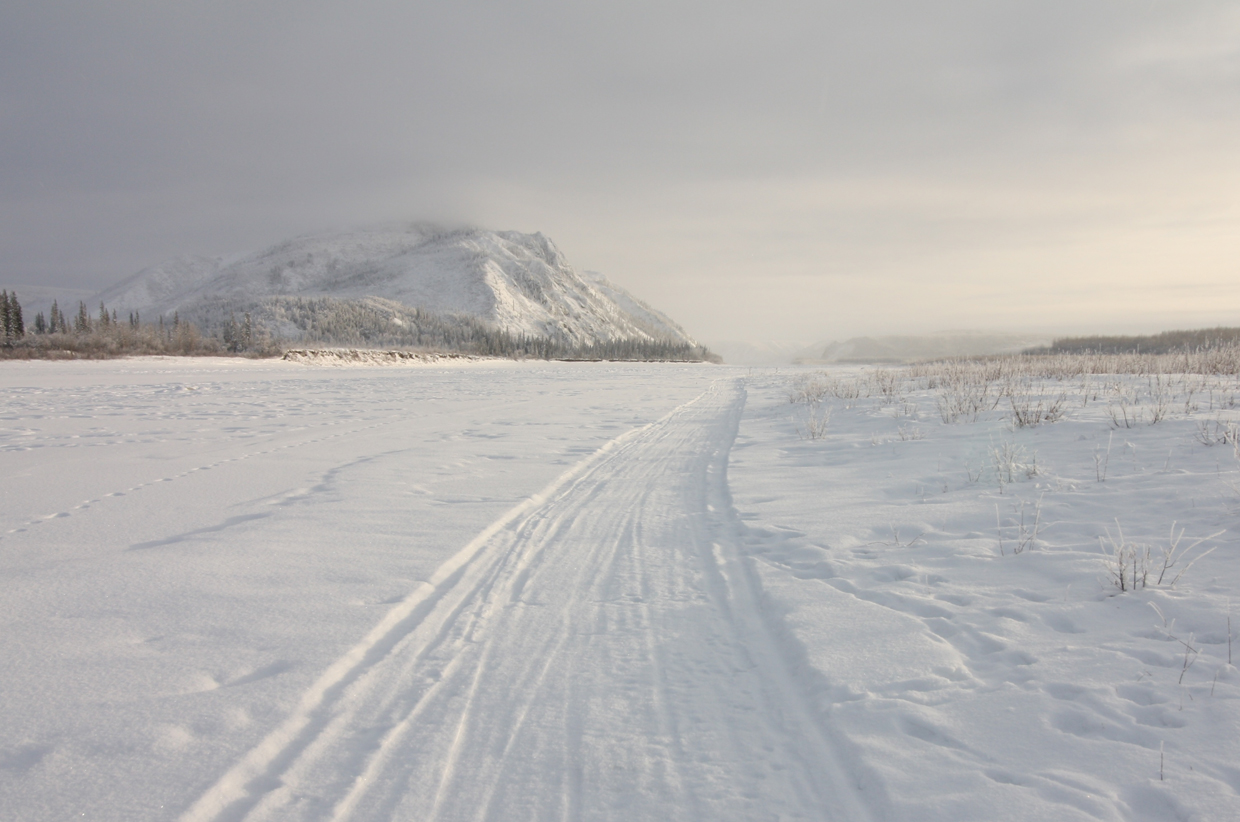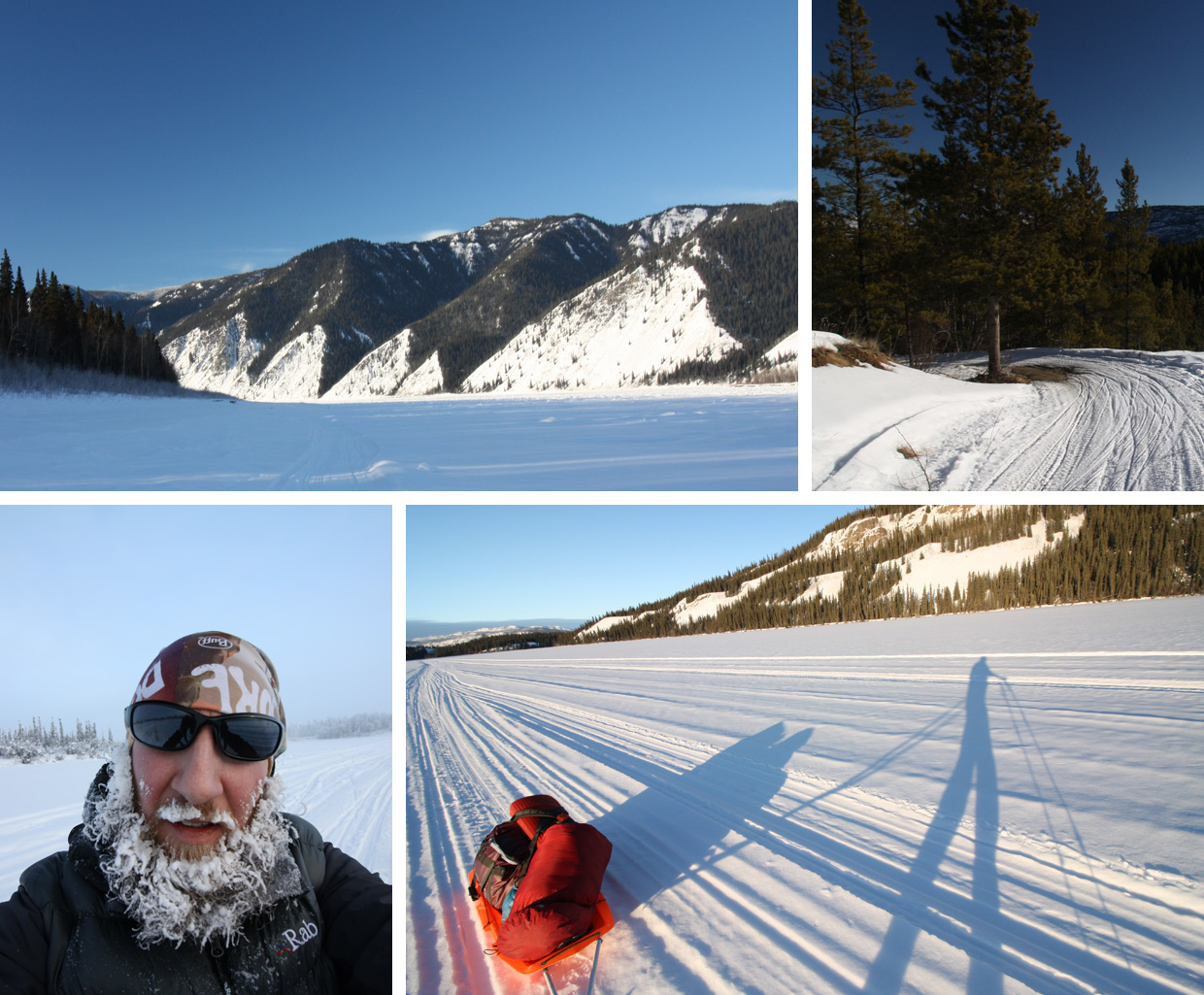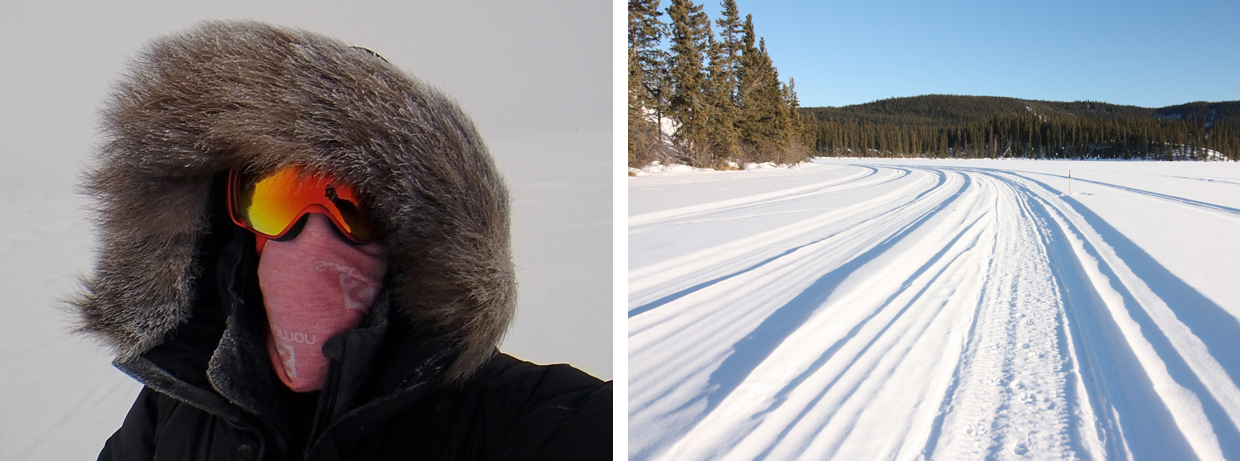Notes from the field: Mark Hines
From The Field Photography: Mark Hines
Photography: Mark Hines
Mark Hines has just returned to the UK after walking 1000 miles across the Yukon. In an interview with Sidetracked he shares his experiences – the highs and the lows – as well as giving advice for other cold weather explorers.
Where are you right now, and how do you feel after your challenge?
I’m now back in the UK, sad times indeed. During the expedition I was suffering with some level of ambivalence, as I dreaded the incredible journey coming to an end, whilst at the same time knowing I had to draw a line under it so I could view it as a success. Now that I have finished that feeling remains: I loved being out on the trail more than anything, and wish I was still there, whilst reflecting with satisfaction that I achieved my goals. Really, if somebody offered me a flight to go back there and pursue more adventures in the Yukon wilderness, I would pack my bags and head to the airport. For me, the Yukon is where my heart is, but I have the reality of an almost overwhelming amount of work to do now I am back (I am in the process of completing a PhD at a London university).
Why did you decide to do this challenge? How did the idea come about?
In 2005, I watched a television documentary about an ultra-endurance race in the Sahara desert. Although I was not a runner, I had spent some time with Egyptian friends in the desert near Cairo, during visits over many years. Also, my background was in exercise physiology, so when I watched the programme I had a little confidence that I stood a chance of finishing. In 2007 I competed in that race, and was compelled to compete in another in the Amazon the following year. By the time I arrived in Brazil for the event, I had already signed-up for a 2009 race in the Yukon. This would be 430-miles, following the 1000-mile route of the Yukon Quest sled dog race, regarded as the toughest sled dog race in the world. In preparation for the event I read various books and blogs about the Yukon Quest and the region in general. I wanted to see how people lived somewhere that was still one of the world’s last wildernesses, and where the 2007 edition of the foot race had been halted due to temperatures below -60 Celsius.
In 2009 I joined eight others in being the first people to successfully finish that event (out of 16 starters) and had fallen in love with the region as a result. The race is in consecutive years, so I went back in 2011 and 2013 and enjoyed similar successes in faster times. In 2012 I spent some time in the Arctic and White Mountains in Alaska. In 2014 I was in Arctic Scandinavia. 2015 saw me supporting the Yukon Quest dog race from a remote cabin (Scroggie Creek), before heading to Alaska to compete in the 350 miles of the Iditarod Trail Invitational; another foot / bike race that follows the route of a 1000-mile sled dog race. For 2016 I needed a bigger challenge. My options were the full 1000 miles of the Iditarod trail, or the 1000 miles of the Quest trail. Having passed through the only mountain range in the Iditarod during my first race there, and having been fascinated by what the remainder of the Quest trail looked like ever since finishing in 2009, it was an easy decision to make.

What did you hope to achieve? What was the key aim?
My first goal was to reach Dawson City, approximately 550 miles from the start in Fairbanks. The dog race alternates routes each year, and I had completed the Whitehorse to Dawson route three times, and so my primary focus was on seeing the (harder) section of trail I had not seen before. If all was going well by the time I reached Dawson, the next goal would be to go on to Whitehorse, completing the 1000-mile distance.
As well as wanting to experience the trail, I also wanted to get an insight into what it would be like to sled-haul somewhere more remote, such as the Polar regions. Rather than making food drops along the way, I hauled all my supplies from the start, making the sled far heavier than what I was used to, although still light enough to be ‘fast and light’ compared with traditional Polar explorers. That was a part of the challenge for me; to see how fast I could move with the approach from my ultra-running events.
What were the biggest challenges?
The biggest overall challenge was the warm winter. Ahead of the start I had heard Alaskans complaining about climate change and the unusually warm season. I had read trail reports that there had been little snowfall.
Warmer temperatures mean a softer trail, and that is very bad news for sled-hauling. When the temperature is between -20 and -35 Celsius, the trail is hard and the sled glides easily across it, offering minimal resistance. Feet move along the trail as if it were a pavement. At temperatures of -15 Celsius and above – as experienced for much of this year’s expedition – the trail becomes extremely soft.
The sled digs into the trail, meaning it has to be ploughed through. Feet punch through the soft trail, making it more energy-sapping to walk, let alone pull a heavy sled that is digging into the trail. I would routinely check behind me just to make sure a bear wasn’t sitting on the sled getting a ride.
The result of this was shorter days, with me often going for 12-15 hours, rather than the 18-20 hours I would do when racing, but this was fine as I wanted to maximise time in the daylight and enjoy the scenery. I was left physically exhausted, and most noticeably during the first few days when I was getting used to the stresses of sled-hauling.
Another consequence of the warm winter was that the greater fatigue and slower progress meant more days on the trail. I was losing weight fairly rapidly, so towards the end I was concerned that I did not have much muscle or fat to provide heat, making it all the more important that it did not get cold. Just after halfway I was extending my days, helped by the lighter sled as I was getting through my food supplies. I would regularly hike until some time between midnight and 3am, when the cooler temperatures allowed me to work harder without getting too hot, and with a firmer trail than during the day. During the first half, the daytime temperatures were around -15 to -20, with night-time temperatures down to -25 at most. This was with the exception of a couple of days on the Fortymile River, approaching halfway, where there was a cold spell and I had the -20 to -35 that I was looking for. By then I was too exhausted to really make the most of it, although my average pace would have been highest then. Until then I had been wearing snowshoes most days, to help limit how much my feet punched through the snow and to provide better traction with the sled.
A cold morning just before the river had me going through my normal morning routine plus putting on the snowshoes, and, not realising that it was cold, my fingertips became mildly frostbitten before I had the time to protect them. I reacted as best I could, but those colder days on the Fortymile made me think I would have to quit by the time I reached Dawson City, or else face the prospect of some serious consequences, perhaps for my fingers or something even worse. The main problem was that I was struggling to unclip my harness and access my kit bags, meaning simple and important tasks were taking longer and in colder temperatures. That would have ramifications for my personal safety, and I could not take such risks. As it happened, I reached a cabin on the second night since the frostbite happened, and was able to take a full day’s rest to allow the fingertips to begin a full recovery. The temperatures then began to increase, and by the time I reached Dawson City my fingers were out of harm’s way. Temperatures for the remainder of the expedition were no colder than -20 at night, and often between -15 and +5 during the day. Although the trail was soft, the Canadian rangers had done a superb job of packing down the trail with their snowmobiles, making it easier to progress along than on the Alaskan side.
One other issue with the warm winter was that some roads were ploughed to help open up the gold mines. Just after Dawson City, a ploughed road (one of three I encountered between Dawson and the finish), was down to the dirt, which began scratching and tearing holes in the base of my sled. Although I patched it up as best I could, the sled was taking in snow and the weight of my kit compressed it into blocks some kilograms in weight. I made repairs fairly often, but there was a limit to what could be achieved with a broken trail marker and duct tape (where the tape would get cold and wet and need to be replaced). I removed the snow every few hours when I stopped for some food, but the extra resistance from the sled, due to both holes and the weight of snow, ensured I was working hard to the very end. On the occasions where there was no snow on the trail – mostly a few patches here and there, but sometimes for several metres or even tens of metres – it felt like a rugby team was hanging on to the back of the sled.
For most of the expedition I was sleeping outside in a bivi bag, but I made use of several cabins I came across during the 1000-mile journey. 650 miles from the start, with only 350 miles remaining, I slipped on some ice as I stepped into the cabin at Scroggie Creek, landing heavily on a block of tree trunk used to split wood on. The pain was incredible and I soon realised I must have broken some ribs. I took a day off to help rule out any internal injuries (such as kidney or abdominal damage), and made the decision to move on. I was really in some considerable pain – the most discomfort I have ever felt in my life – but I knew the reality was that nothing is done for rib fractures, and I would be in pain whether I continued or quit. The most discomfort came with breathing and trying to lie down to sleep, and as I would be doing those things anyway, I could at least rule-out the ever-lasting pain of quitting my expedition so close to the end (and where it proceeded along easier terrain). I was not able to use my bivi bag for a few days, due to the pain that came with trying to manoeuvre myself when lying down. Instead I built up thick mattresses from spruce, and positioned myself against trees where I had some support and less discomfort.

What’s surprised you most during your journey?
The amount of animal tracks! I am used to seeing animal signs along the trail – animals like to travel along them because it’s easier than soft and deep snow off the trails. I was heading along a 165-mile section of the frozen Yukon River and at first thought a dog team from the Quest was not far ahead. After a while I noticed that the prints were far fresher than the sign of the last sled, and then spotted tracks moving off the trail and heading out across the river. In all, about 15 wolves had been following the last dog team. I saw wolf prints most days, and some were huge. The most of a wolf I saw was the back half of a black one as it disappeared into the woods ahead of me.
There were a good number of moose and caribou tracks, rabbits and squirrels, and plenty of lynx. About 300 miles from the end there were two parallel sets of fresh (very fresh) mountain lion tracks.
What was the most important thing you learnt?
To take each day at a time. 1000 miles seems like an impossible distance, but I didn’t have to think of that. All I had to do was look after myself for a single day of walking and a single camp. The next day I would repeat. Looking ahead a few days, or thinking about distances over a hundred miles, was not really helpful and could often become quite daunting. It was a case of ‘take care of the days and the 1000 miles will take care of themselves’.
What was the most useful piece of kit?
I am not sure how to narrow it down to a single piece of kit! I suppose it would have to be my Salomon trail shoes. They took care of my feet for 1000 miles without a single blister, foot or overuse injury. All the clothing, hydration, sleeping and sled equipment is so vital to safe and efficient progress in that environment, and every piece of kit was selected for being the best I knew of. I was happy with all of it.
To someone hoping to embark on his or her own expedition, what advice would you offer?
When you commit to the idea of doing an expedition, the overall preparation is the single most important component. You need to have a good working knowledge of how to look after yourself in that environment, how to adapt and improvise when something breaks or does not go to plan. Food, clothing and equipment need to be right for the distance, climate and terrain, but most important is your ability to look after yourself. Preparing for the route, how you navigate it, and having exit/rescue strategies have to be in place long before the start. By getting everything prepared early-on, there ought to be very little stress during the expedition itself – you have already prepared everything and know what to do in a particular scenario, so you can just focus on making progress.
Finally, if you could go back in time and tell yourself something as you were setting off what would it be?
Watch out for the ice outside the Scroggie Creek cabin, and take more duct tape!
Interview by Daniel Neilson // Photography: Mark Hines


